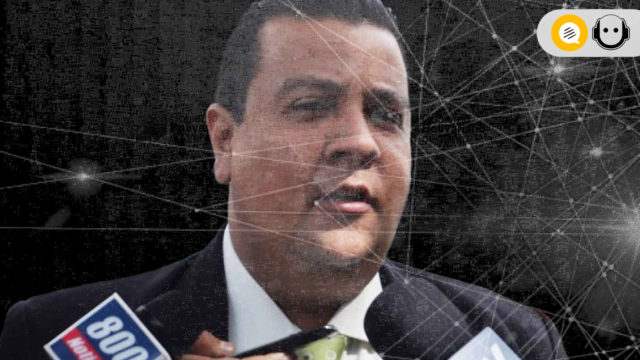
For over 20 years, Chavistas have spread hate speech against opposition leaders, journalists, and human rights defenders. But now, the case of Javier Tarazona shows how they use Twitter and classic propaganda channels.
By Caracas Chronicles
Aug 1, 2022
Amidst Venezuela’s humanitarian crisis, NGOs still represent one of the most important sectors in the fight for respect for human rights in the country. However, The work of activists and NGOs in Venezuela is increasingly asphyxiated by Maduro’s regime. The Center for Advocates and Justice documented 743 attacks against defenders in 2021, an increase of 145% compared to 2020. The case of Javier Tarazona, professor, activist, and director of NGO FundaRedes, arrested in July last year and still in prison, is an example of how the government criminalizes activists, and how they use social media to justify arbitrary detentions.
Probox wrote a report highlighting Maduro’s social media strategy against Javier Tarazona. You can read it here.
What happened to Javier Tarazona?
On July 2nd, 2021, NGO FundaRedes denounced that Javier Tarazona was arbitrarily detained in Falcón when he went to the Prosecutor’s Office to denounce that he was being harassed and persecuted by Polifalcón officers, the Bolivarian Intelligence Service (SEBIN) and other unidentified individuals. Javier was detained with Rafael Tarazona and Omar García (FundaRedes activists) and Yhonny Romero, director of Mayday CONFAVIDT, an NGO specialized in protecting the family members of victims of disappearances and human trafficking in Venezuela.
Romero was quickly released, but the three activists were charged with “treason against the homeland, terrorism, and inciting hatred.” Two of them were released and Javier Tarazona is still in jail. Twelve days later, Javier and Rafael Tarazona’s mother was detained for 24 hours by SEBIN officers, after a patrol car parked outside the residence with the goal of raiding the Tarazona family home.
Before the arrests, FundaRedes had been in charge of reporting the situation on the Colombian-Venezuelan border, the armed conflict between FARC and ELN dissidents with officers of the Venezuelan State, especially in the state of Apure, which was communicationally handled with considerable opacity by the regime.
How the government used social media against Tarazona
The attacks against Tarazona started way before he was arrested. Diosdado Cabello is known for using his Talk Show, Con el Mazo Dando, to steer Chavista social media hordes against dissenting voices. And not only vocal opponents, like journalists or human rights activists, he has used them to attack people in the business community and regular citizens – Diosdado has planted narratives in social media that later have been used to jail people.
These attacks go beyond social media bullying and can materialize into physical attacks or state violence. In March 2020, Diosdado directed his social media troops against Fundaredes and Tarazona under the banner: La Furia Bolivariana (The Bolivarian Fury). Eventually, his house was marked with graffiti: “La Furia Bolivariana (FB) XXXX.”
As the old saying goes: When the river roars, rocks are coming.
Also, “the protector of Táchira state,” Freddy Bernal said that the courts should summon Tarazona and that he was connected to the U.S. government. Soon after this narrative (and the idea that Tarazona was hired by the CIA) was included in social media trends and Whatsapp threats.
Later, when he was arrested, accounts linked to the radical officialism positioned the label #TarazonaMercenario, celebrating his arrest, accusing him of conspiring and “collaborating with the FARC” and of being an “emissary of the CIA.” This event registered approximately 1,642 tweets and 15.29% of the messages were made by possible automated accounts or with inauthentic behavior.
While Tarazona was reporting on the 2021 armed conflict in Apure, over eight million messages (332 trends) by Chavista-related accounts boosted propaganda and support for the Armed Forces and the National Guard.
Has Chavismo used this strategy before?
Yes. It’s not the first time that Chavismo manipulates Twitter to position trends that “justify” their actions through smear campaigns, defamation, and attacks against civil society actors who denounce corruption and human rights violations. Attacks against journalist Roberto Deniz, who reported Alex Saab’s corruption networks, have spread widely on social media, and we have written extensively about Maduro’s strategy to turn Saab into a Twitter martyr.
…
Read More: Caracas Chronicles – How Chavismo uses social media to justify the detention of Human Rights Activists
…

